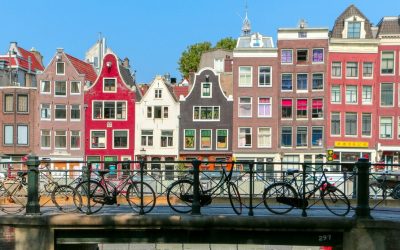 di Nadia Fondelli – Nella storia meno conosciuta di Firenze ci sono anche tutta una serie di animali esotici, all’epoca considerati addirittura fantastici. Non solo quindi i leggendari leoni simbolo del Marzocco che per secoli hanno ruggito a due passi da Palazzo Vecchio in quella via che non a caso si chiama via dei Leoni prima di trasferirsi ai serragli di Piazza San Marco.
di Nadia Fondelli – Nella storia meno conosciuta di Firenze ci sono anche tutta una serie di animali esotici, all’epoca considerati addirittura fantastici. Non solo quindi i leggendari leoni simbolo del Marzocco che per secoli hanno ruggito a due passi da Palazzo Vecchio in quella via che non a caso si chiama via dei Leoni prima di trasferirsi ai serragli di Piazza San Marco.
Firenze in epoche diverse ha visto apparire giraffe, rinoceronti e ippopotami. Amimali stranissimi, mai visti, che provenivano da paesi lontani, ma che mostrati alla corte e al popolo servivano a puntellare la potenza dei Signori.
Proprio in occasione del restauro dell’ippopotamo del granduca di Toscana che da pochi giorni è tornato visibile alla Specola che vogliamo parlarvi di questi animali attorno alla cui esistenza sono molte storie e altrettante leggende.
L’ippopotamo che torna visibile in questi giorni, ad esempio, era il primo che sbarcana in Europa dai tempi dell’impero romano. Secondo la tradizione era un dono settecentesco al primo granduca Lorena Pietro Leopoldo, ma da ricerche storiche pare invece che ifosse a Firenze dal 1677 grazie alla passione sfrenata di Cosimo III per animali e piante esotiche. Fu lui a far costruire in Boboli gabbie per pappagalli, scimmie e fagiani da mostrare agli ospiti e ai fiorentini. Non si sa chi abbia donato al signore l’ippopotamo: forse un sultano o un visir, fatto sta che “Pippo” – così era amorevolmente chiamato – visse legato a catena in una vasca di Boboli fino alla morte. Pippo fu poi imbalsamato in maniera creativa da un artigiano che non lo aveva mai visto vivo tant’è che le zampe furono modificate secondo un modello canino.
Nello speciale zoo voluto dal Magnifico a Cascine di Tavola, vero esempio di fattoria ideale rinascimentale, fu portata sicuramente la celebre giraffa che, con un leone addomesticato, gli aveva regalato nel novembre 1487 «el Soldano di Babilonia». Un animale magnifico che lasciò a bocca aperta i fiorentini racconteranno i cronisti del’epoca , perché «era sette braccia alta, e ‘l piè come ‘l bue» e così tranquilla che poteva prendere una mela dalla mano di un bambino. Sollevò così tanta curiosità che si dice che dovettero portarla in giro anche per conventi perché la potessero vedessero anche le suore di clausura. Un impazzimento di popolo tale che, il «camelopardo», com’era chiamata la giraffa allora, finì addirittura nel corteo di una «Adorazione dei magi» del Ghirlandaio e nel «Tributo a Cesare» lasciato incompiuto dal Andrea del Sarto e visibile nella Villa di Poggio a Caiano e nell’affresco del Vasari in Palazzo Vecchio “Omaggio degli ambasciatori aal Magnifico”.
Interressante infine la storia dell’elefante albino e del rinoceronte che re Manuele d’Aviz di Portogallo inviò in dono per ingraziarselo a Papa Leone X . Due speciali regali per l’incoronazione a papa di un Medici. Diverso però il destino dei due animali, Annone (questo il nome dell’elefante così chiamato in onore del generale cartaginese che lo regaalò a sua volta al re portoghese) arrivò da Lisbona a Roma nel 1514, mentre il rinoceronte, inviato al Papa due anni più tardi nella città eterna non arrivò mai. Dopo uno sbarco a Marsiglia per essere ammirato a caro prezzo dal re di Francia Francesco I Valoris e dalla sua corte, la bestia naufragò dopo una tempesta nel mar Ligure. Legato con una catena il rinoceronte fu ritrovato affondato con stupore e meraviglia dagli abitanti di Villafranca (l’attuale Villefranche-sur-Mer) che lo videro emergere dal mare e che ancor oggi fanno rivivere la sua storia anche in spettacoli teatrali.
E’ lo sfortunato rinoceronte che venne poi raffigurato da Albrecht Dürer in una xilografia destinata a divenire famosa. Quella che per secoli è stata riprodotta su libri, enciclopedie e dizionari per raffigurare i rinoceronti. Quell’immagine di Dürer fu scelta poi dal Duca Alessandro de’Medici come sua insegna associata al motto “non vuellvo sin vencer”, non torno se non vnco. Quell’effige si trova oggi fera gli stuucchi di Palazzo vechio.
Tanti animali, tante storie e leggende, tante curiosità legate alla centralità di Firenze nell mondo.
by Nadia Fondelli – In the Electronic Cigarettes history of Florence, there are also a number of exotic animal at the time considered fantastic. So not only the legendary symbol of the lions Marzocco who for centuries have roared around the corner from Palazzo Vecchio in the way which not surprisingly is called dei Leoni before moving to the menageries of Piazza San Marco.
Florence, at different times, has seen appear giraffes, rhinos and hippos. Strange animals who came from distant countries, but that shown to the court and to the people served to shore up the power of the Signori.
On the occasion of the restoration of the Grand Duke hippo that a few days ago was returned at Specola museum we want to talk about these animals around the existence of which are many stories and many legends.
The hippo returns visible these days, for example, was the first to arriving in Europe since the Roman Empire. According to tradition, it was a gift to the first Lorraine Grand Duke Pietro Leopoldo, but by historical research seems instead stay in Florence since 1677 thanks to the unbridled passion of Cosimo III for exotic animals and plants.
He was the one to build in Boboli cages for parrots, monkeys and pheasants show guests and Florence. No one knows who has donated to the hippopotamus, perhaps a sultan or a vizier, the fact is that “Pippo” – that was lovingly called – lived tied to a rope in a tub of Boboli until his death. Pippo was then stuffed in a creative way by a craftsman who had never seen alive so much so that the legs were modified in a dog model.
In the special zoo wanted by the Lorenzo il Magnifico in Cascine di Tavola, a true example of the ideal farm Renaissance, was certainly reach the famous giraffe, with a tame lion, had given him in November 1487 “and the Soldan of Babylon.”
A magnificent animal that left a gaping Florentine tell reporters del’epoca, because “he was seven arms high, and ‘the footer as’ the ox,” and so quiet that he could take an apple from the hand of a child. Raised so much curiosity that you had said to carry it around for convents because they saw could also cloistered nuns.
A madness of people that the “camelopardo,” as it was called then the giraffe, even ended up in the parade of “Adoration of the Magi” by Ghirlandaio and “Tribute to Caesar” left unfinished by Andrea del Sarto and visible in the Villa of Caiano and in the fresco by Vasari in the Palazzo Vecchio “Homage ambassadors aal Magnificent.”
Finally interressante history albin elephant and rhinoceros that King Manuel of Aviz of Portugal sent a gift to ingratiate himself to Pope Leone X. Two special gifts for the coronation of a Pope Medici. But the fate of the other two animals, Annone (the name of the elephant named in honor of the Carthaginian general who in turn gift at the Portuguese king) came from Lisbon to Rome in 1514, while the rhinoceros, the Pope sent two years later in the eternal city never came.
After a landing in Marseille to be admired dearly by King Francis I of France Valoris and his court, the beast sank after a storm in the Ligurian Sea. Tied with a chain rhinoceros was found buried with awe and wonder by the inhabitants of Villafranca (now Villefranche-sur-Mer) that saw him emerge from the sea and which still relive its history in theater.
And the unfortunate rhino that was later depicted in a woodcut by Albrecht Dürer destined to become famous. What for centuries has been reproduced in books, encyclopedias and dictionaries to represent the rhinos. Image of Dürer was chosen by the then Duke Alessandro de ‘Medici as his insignia associated with the motto “not vuelvo since vencer” no turning if not winner. This image is now in Palazzo Vecchio.

So many animals, so many stories and legends, many curiosities related to the centrality of Florence in the world.




0 commenti